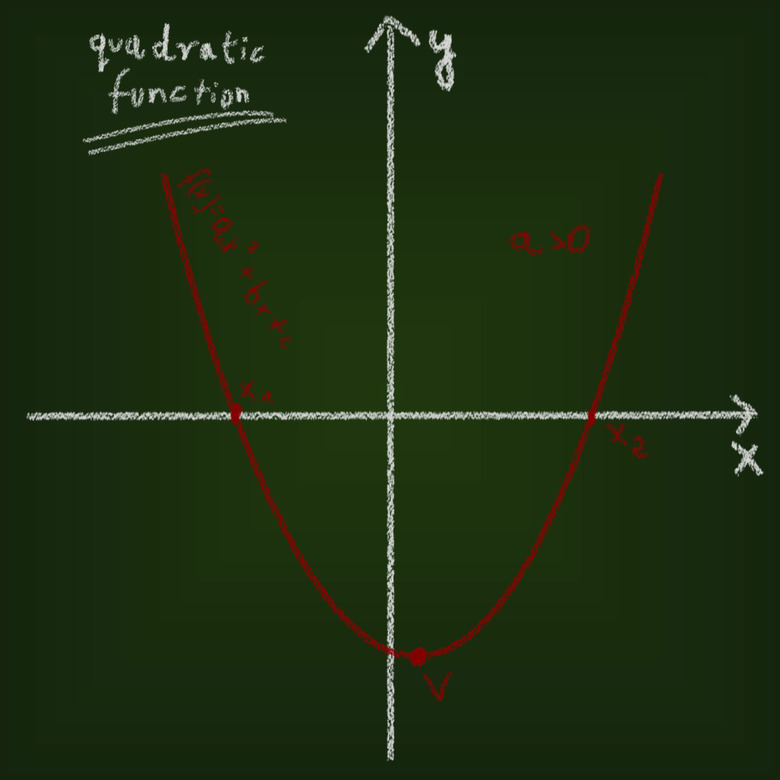How To Find The Minimum Or Maximum In A Quadratic Equation
A quadratic equation is an expression that has an x^2 term. Quadratic equations are most commonly expressed as ax^2+bx+c, where a, b and c are coefficients. Coefficients are numerical values. For example, in the expression 2x^2+3x-5, 2 is the coefficient of the x^2 term. Once you have identified the coefficients, you can use a formula to find the x-coordinate and the y-coordinate for the minimum or maximum value of the quadratic equation.
Step 1
Determine whether the function will have a minimum or a maximum depending on the coefficient of the x^2 term. If the x^2 coefficient is positive, the function has a minimum. If it is negative, the function has a maximum. For example, if you have the function 2x^2+3x-5, the function has a minimum because the x^2 coefficient, 2, is positive.
Step 2
Divide the coefficient of the x term by twice the coefficient of the x^2 term. In 2x^2+3x-5, you would divide 3, the x coefficient, by 4, twice the x^2 coefficient, to get 0.75.
Step 3
Multiply the Step 2 result by -1 to find the x-coordinate of the minimum or maximum. In 2x^2+3x-5, you would multiply 0.75 by -1 to get -0.75 as the x-coordinate.
Step 4
Plug in the x-coordinate into the expression to find the y-coordinate of the minimum or maximum. You would plug -0.75 into 2x^2+3x-5 to get 2(-0.75)^2+3-0.75-5, which simplifies to -6.125. This means the minimum of this equation would be x=-0.75 and y=-6.125.
TL;DR (Too Long; Didn't Read)
If there is not a number before a variable, the coefficient is 1. For example, if your expression is x^2+5x+1, the x^2 coefficient is 1.
Cite This Article
MLA
Kennan, Mark. "How To Find The Minimum Or Maximum In A Quadratic Equation" sciencing.com, https://www.sciencing.com/minmax-quadratic-equation-7723159/. 24 April 2017.
APA
Kennan, Mark. (2017, April 24). How To Find The Minimum Or Maximum In A Quadratic Equation. sciencing.com. Retrieved from https://www.sciencing.com/minmax-quadratic-equation-7723159/
Chicago
Kennan, Mark. How To Find The Minimum Or Maximum In A Quadratic Equation last modified March 24, 2022. https://www.sciencing.com/minmax-quadratic-equation-7723159/
